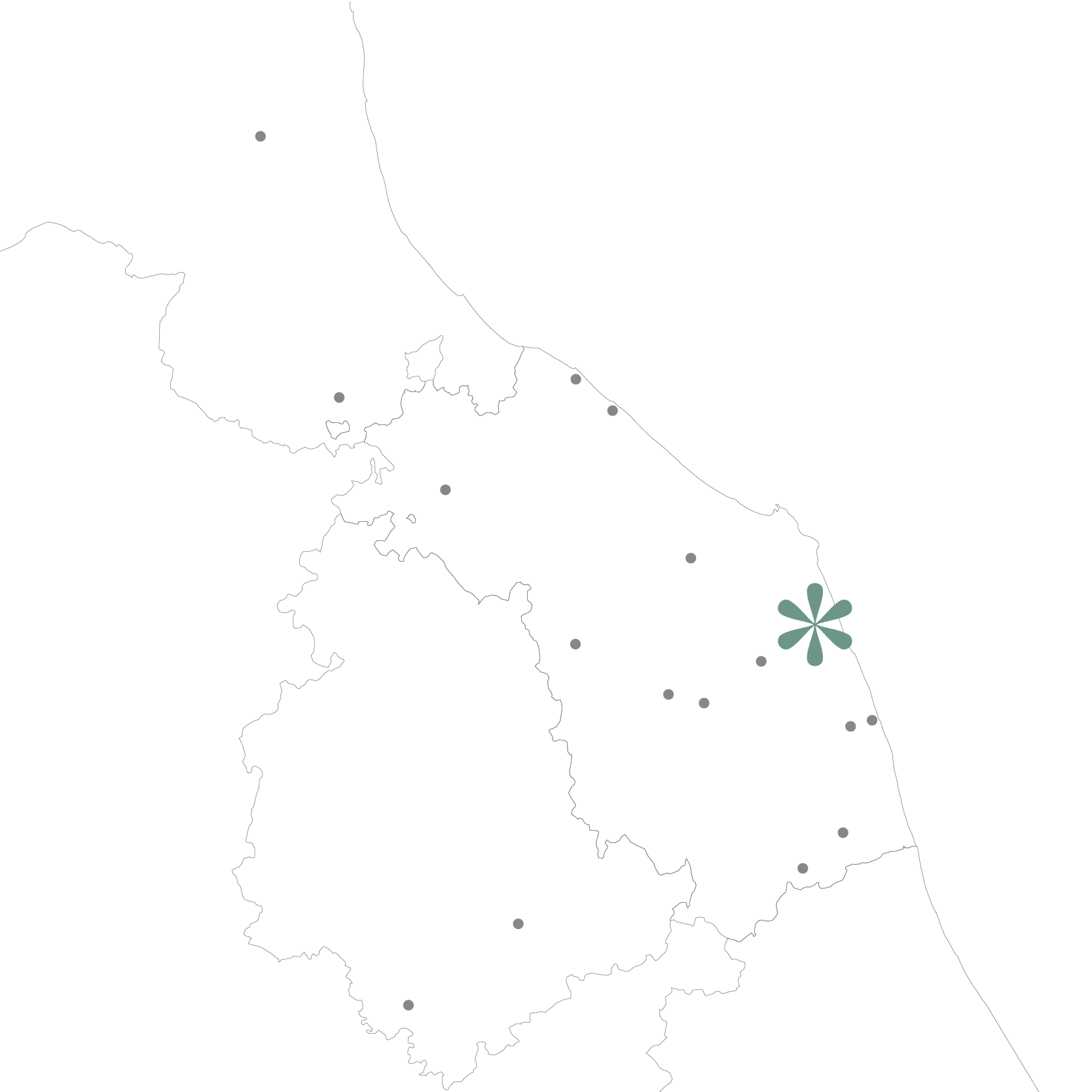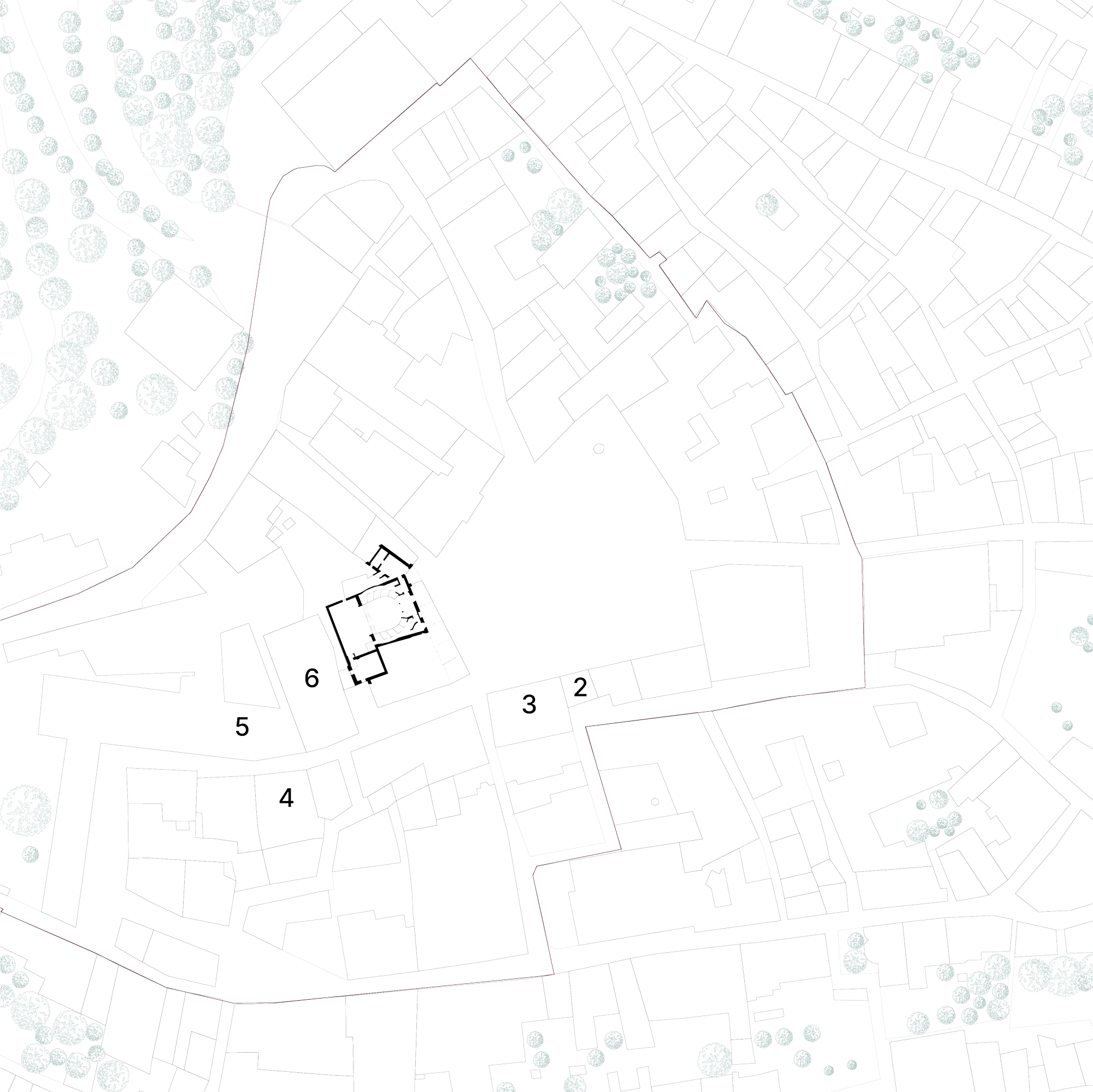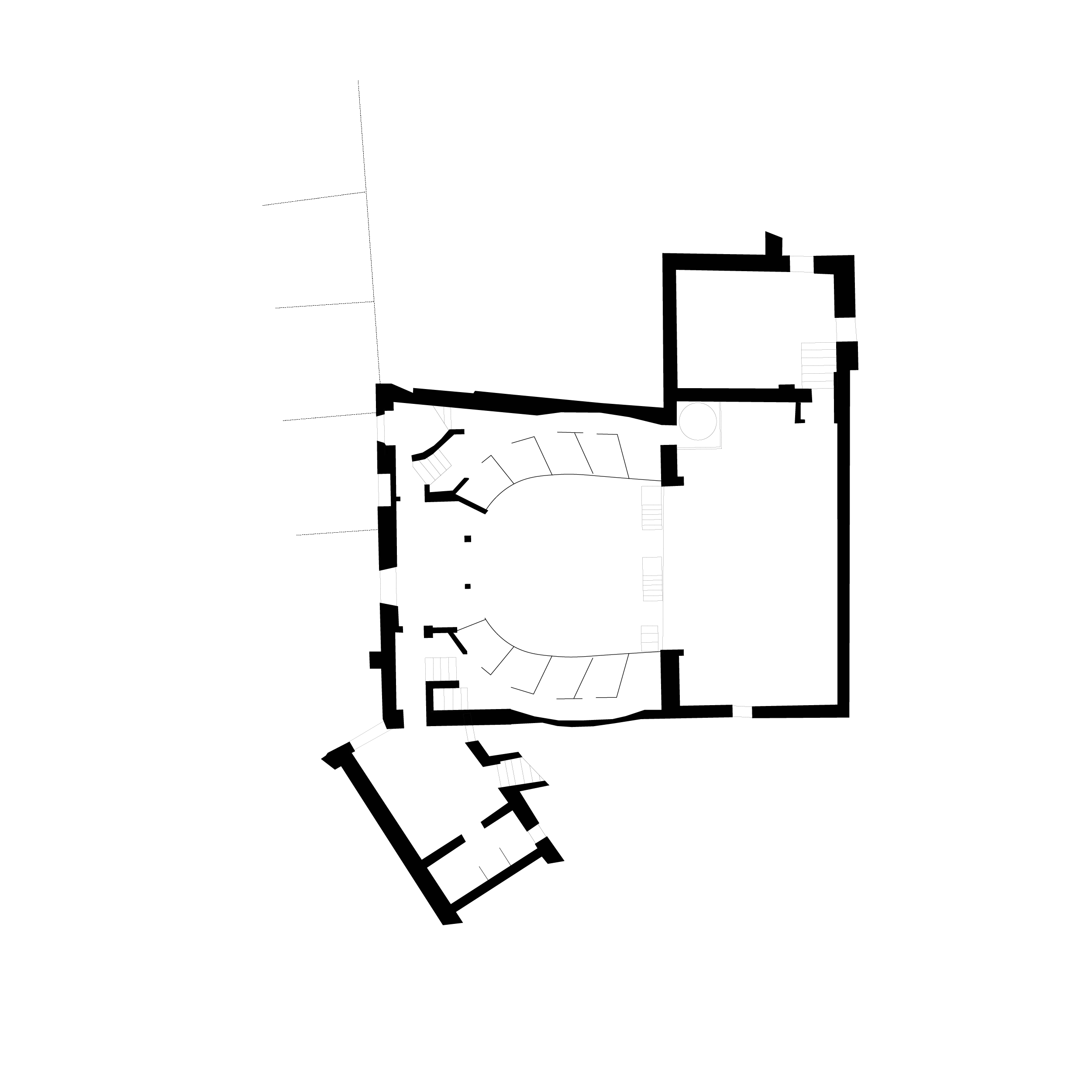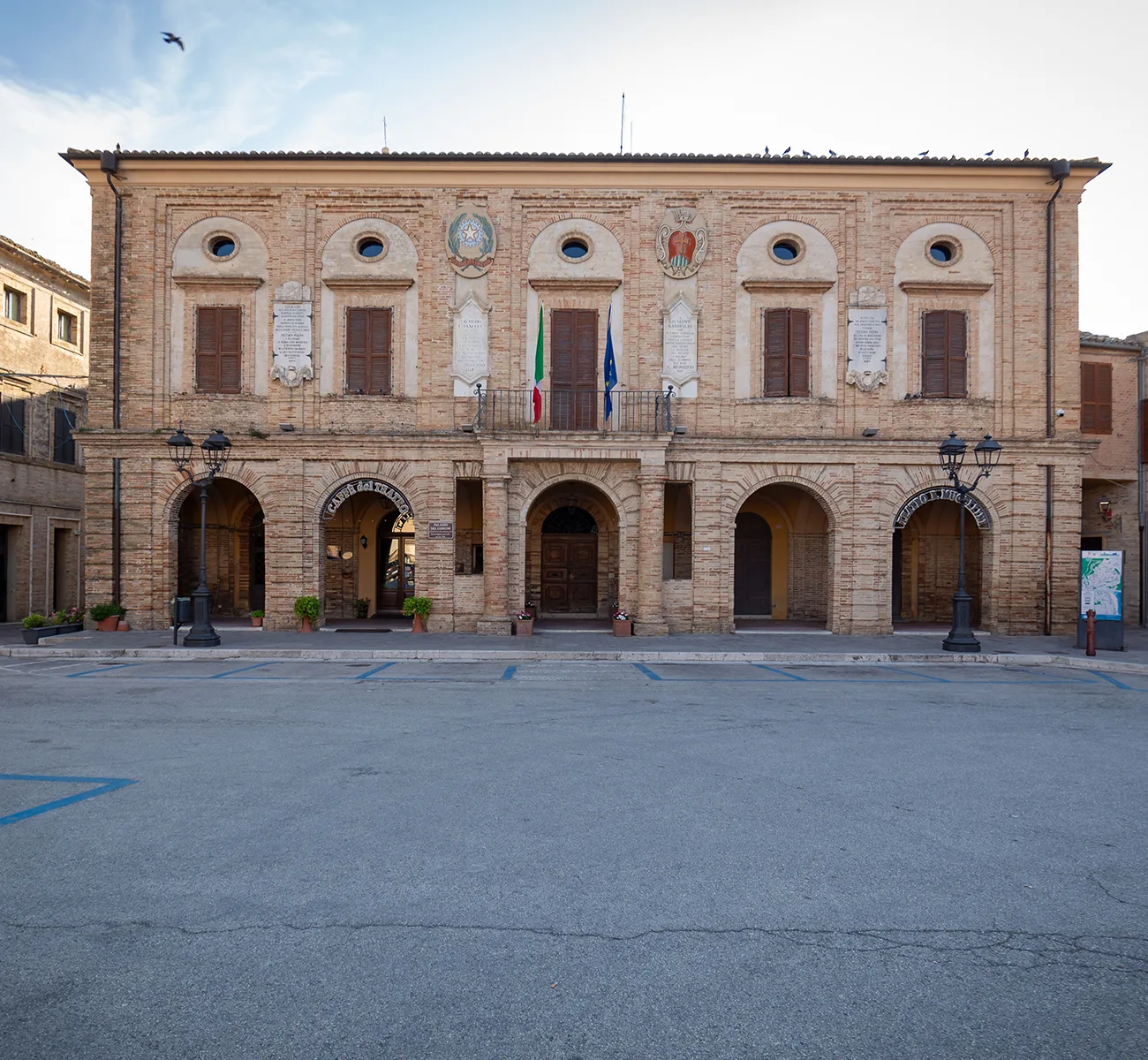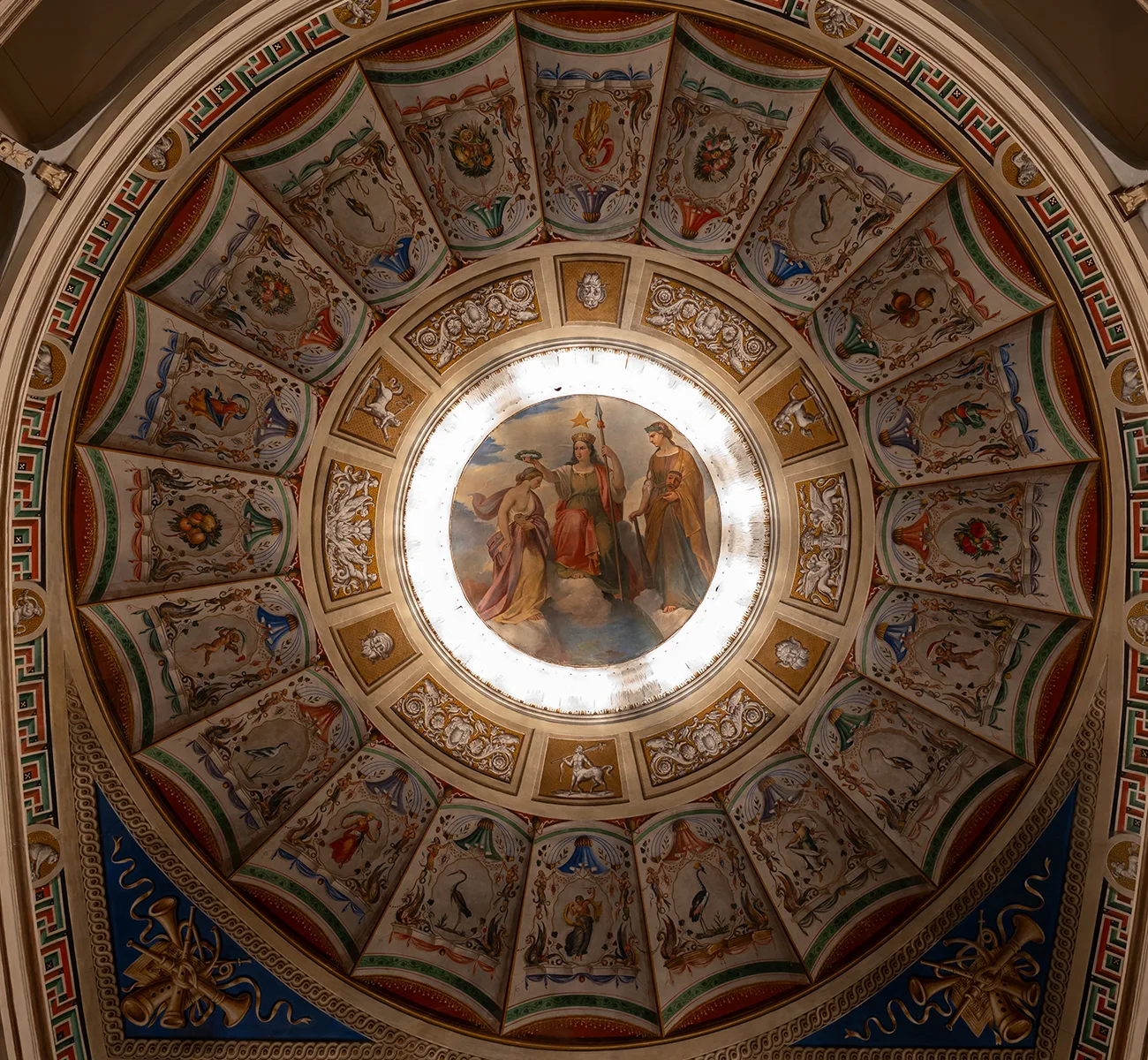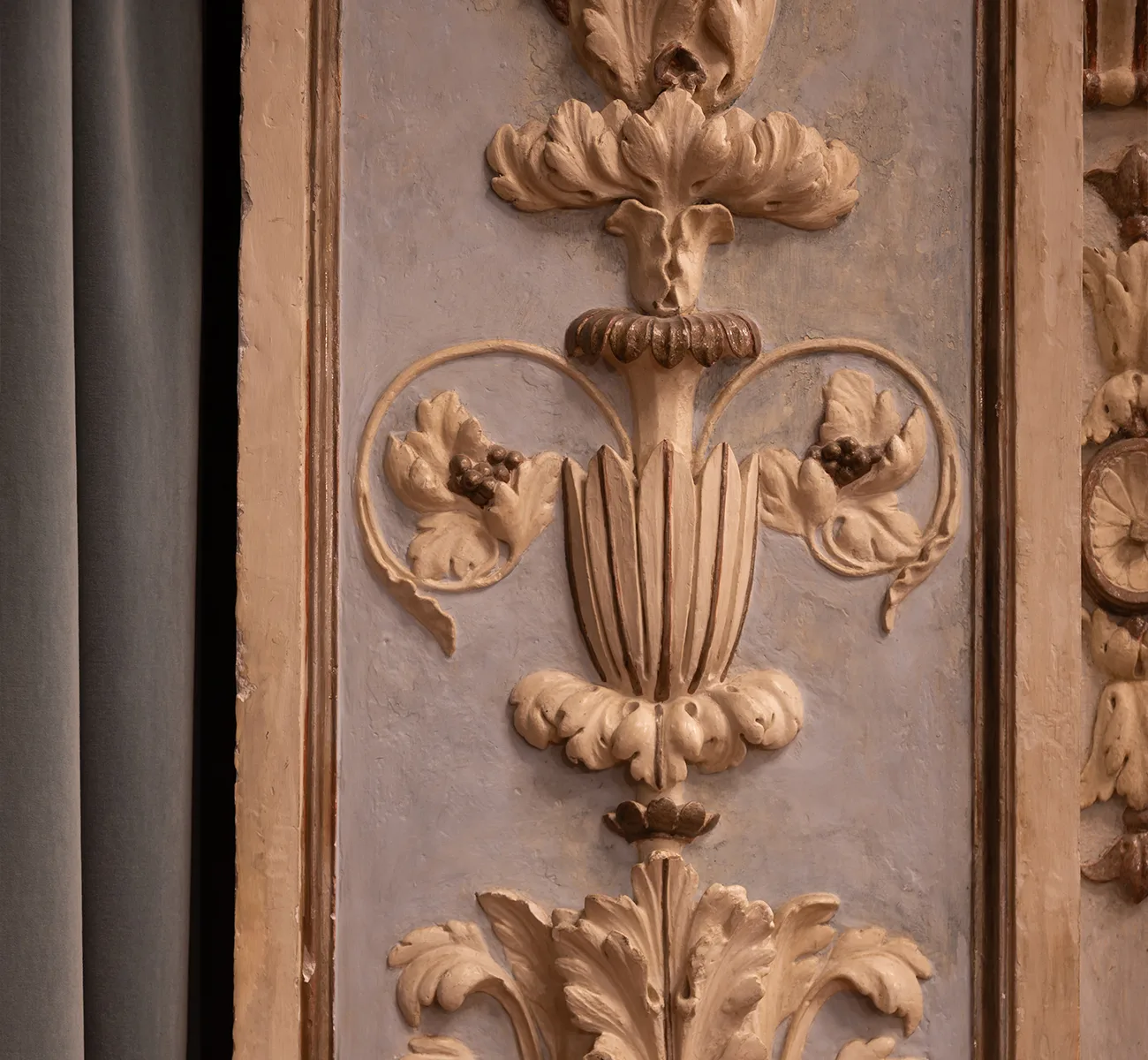The nominated property includes the blocks that front onto Piazza Giacomo Matteotti, the heart of the upper town. The entire square is lined with magnificent palazzos that once belonged to noble families. The centrepiece of the square is the historic cast-iron fountain with three bowls and three cherubs at the base. It has stood in this location for over 120 years and symbolises continuity and tradition.
Notable buildings in Piazza Matteotti include the 14th-century Palazzo del Podestà, with its strik-ing swallowtail merlons, and the medieval civic tower. Another important building is the town hall, Palazzo Comunale. There are several impressive pieces of art in the council chamber on the first floor. Situated at the corner of Piazza Matteotti and Via Marefoschi, this building is also home to the Teatro Bruno Mugellini. This mix of cultural elements and a rich, fascinating history make Piazza Gia-como Matteotti an extremely important place for the local community and visitors.
The Teatro Bruno Mugellini in Potenza Picena preserves its historic house curtain, which depicts a scene from mythology with Minerva. A Latin inscription in the stone in the painting describes the goddess as a “zealous enthusiast of science and the arts”. The theatre employs manual rope rigging.
The theatre is managed by the municipality of Potenza Picena and offers a varied programme that includes theatrical performances, symphony music, comedy and concerts. Additionally, it hosts music and dance events organised by schools and associations and is a venue for weddings, meetings, conventions, and rehearsals. Several cultural organisations and schools maintain special part-nerships with the theatre. These include: Associazione Aurora; Associazione Amici della Musica; Complesso Musicale Cittadino; Istituto Comprensivo Giacomo Leopardi and Istituto Comprensivo Raffaello Sanzio; Pro-Loco Potenza Picena. The theatre is open for visits by appointment.
